Thermal Response Testing for Geothermal Heat Exchangers Begins
The Net-Zero house features a geothermal heat pump that can be configured to operate with three different types of ground heat exchangers (GSHX): vertical borehole, horizontal u-tube, and horizontal slinky.
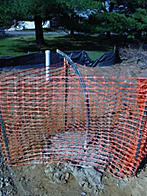
|
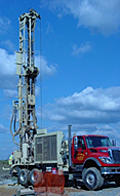
|
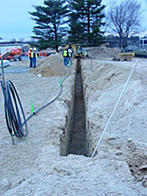
|
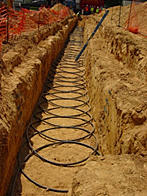
|
| Top of vertical borehole heat exchanger | Vertical Borehole drilling rig | Horizontal u-tube heat exchanger | Horizontal slinky heat exchanger |
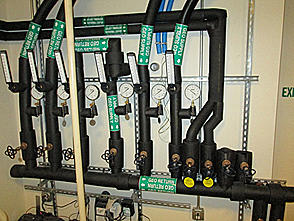
|
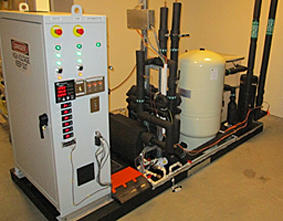
|
| Manifold for configuring which GSHX is connected to the TRT rig | Thermal Response Test Rig |
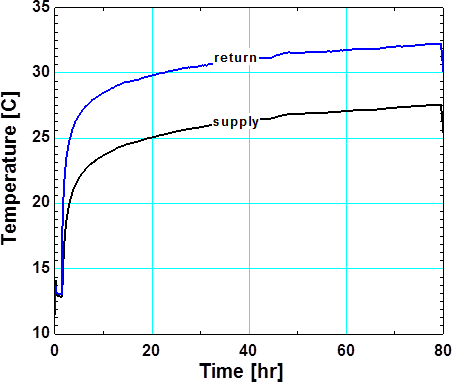
One way to compare the relative performance between the heat exchangers is to perform Thermal Response Tests (TRT), where the fluid circulating through the buried tubing is heated at a constant rate for a period of a few days. The temperature change of the circulating fluid can be used to infer soil thermal properties and to calibrate models that predict and compare the long-term performance of the heat exchangers. The vertical borehole GSHX was the first to be tested, the temperature response is shown in the figure at right.
The TRT test rig is located in the basement of the Net-Zero house and can be connected to each of the three heat exchangers via a manifold system. Temperature and flow measurements on the TRT rig are used to measure the thermal performance of the whole system; these data are combined with field measurements to characterize variations within the parallel branches of a given heat exchanger.

